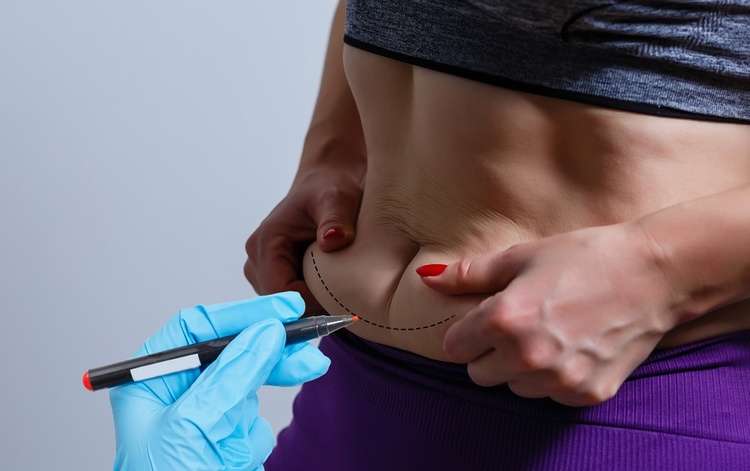Liposuction: Understanding the Popular Fat Removal Surgery
Liposuction is a surgical procedure that has gained widespread popularity in recent years as a method for removing excess fat from specific areas of the body. This cosmetic surgery aims to contour and reshape the body by targeting stubborn fat deposits that are resistant to diet and exercise. As with any medical procedure, it's essential to understand the process, benefits, risks, and expectations associated with liposuction before considering it as an option.

The most common areas treated with liposuction include the abdomen, thighs, hips, buttocks, arms, and neck. It’s important to note that liposuction is not a weight-loss solution but rather a method for improving body contours and proportions. The procedure is most effective for individuals who are at or near their ideal body weight but struggle with localized fat deposits.
Who is an ideal candidate for liposuction surgery?
Ideal candidates for liposuction are generally healthy adults who have realistic expectations about the procedure’s outcomes. Some key factors that doctors consider when evaluating potential candidates include:
-
Overall health: Candidates should be in good physical condition without any serious medical issues.
-
Skin elasticity: Younger patients with good skin elasticity tend to achieve better results, as their skin is more likely to contract smoothly after fat removal.
-
Body weight: Individuals within 30% of their ideal body weight are typically considered good candidates.
-
Lifestyle: Non-smokers who maintain a healthy diet and exercise routine are more likely to experience successful outcomes.
-
Realistic expectations: Understanding that liposuction is not a substitute for weight loss or a cure for obesity is crucial.
It’s important to consult with a board-certified plastic surgeon to determine if you’re a suitable candidate for liposuction. They will assess your individual case and discuss potential risks and benefits based on your specific circumstances.
What are the potential risks and side effects of liposuction?
As with any surgical procedure, liposuction carries certain risks and potential side effects. While complications are relatively rare when performed by a qualified surgeon, it’s essential to be aware of the possible issues that may arise:
-
Contour irregularities: Uneven fat removal can lead to bumpy, wavy, or withered skin appearance.
-
Fluid accumulation: Temporary pockets of fluid (seromas) may form under the skin.
-
Numbness: Temporary or permanent numbness in the treated area is possible.
-
Infection: Although rare, infections can occur at the incision sites.
-
Internal puncture: In extremely rare cases, the cannula may penetrate too deeply, potentially damaging internal organs.
-
Fat embolism: Fat particles can potentially enter the bloodstream, causing serious complications.
-
Adverse reaction to anesthesia: Some patients may experience negative reactions to the anesthesia used during the procedure.
It’s crucial to discuss these risks thoroughly with your doctor before deciding to undergo liposuction. Following all pre- and post-operative instructions can help minimize the likelihood of complications.
How should patients prepare for liposuction surgery?
Proper preparation is key to ensuring a successful liposuction procedure and recovery. Your surgeon will provide specific instructions, but general guidelines often include:
-
Medical evaluation: Undergo any required medical tests and assessments to ensure you’re fit for surgery.
-
Medication adjustments: Stop taking certain medications, such as blood thinners or anti-inflammatory drugs, as directed by your doctor.
-
Smoking cessation: If you smoke, quit at least two weeks before surgery to promote better healing.
-
Arrange for help: Plan for someone to drive you home after the procedure and assist you during the initial recovery period.
-
Prepare your recovery space: Set up a comfortable area at home with necessary supplies for your post-operative care.
-
Follow dietary guidelines: Adhere to any pre-operative dietary restrictions provided by your surgeon.
-
Stay hydrated: Drink plenty of water in the days leading up to your surgery to support your body’s healing process.
By following these preparatory steps, you can help ensure a smoother surgical experience and recovery period.
What does the recovery process involve after liposuction?
Recovery from liposuction varies from person to person, but generally, patients can expect the following:
-
Initial recovery: Most people can return to work within a few days to a week, depending on the extent of the procedure.
-
Swelling and bruising: These are common and may persist for several weeks.
-
Compression garments: Wearing special compression garments helps reduce swelling and supports the healing process.
-
Pain management: Discomfort can be managed with prescribed pain medications or over-the-counter options as recommended by your doctor.
-
Limited activity: Avoid strenuous exercise for at least 2-4 weeks, gradually increasing activity as advised by your surgeon.
-
Follow-up appointments: Attend all scheduled post-operative visits to monitor your healing progress.
-
Final results: While some improvements are visible immediately, final results may take several months to fully develop as swelling subsides and skin contracts.
It’s crucial to follow your surgeon’s post-operative instructions carefully to ensure proper healing and optimal results. Patience is key during the recovery process, as the full effects of liposuction may not be apparent for several months.
In conclusion, liposuction can be an effective way to contour the body and remove stubborn fat deposits. However, it’s essential to approach the procedure with realistic expectations and a thorough understanding of the process, risks, and recovery involved. Consulting with a board-certified plastic surgeon is crucial for determining if liposuction is the right choice for your individual needs and goals.
This article is for informational purposes only and should not be considered medical advice. Please consult a qualified healthcare professional for personalized guidance and treatment.






